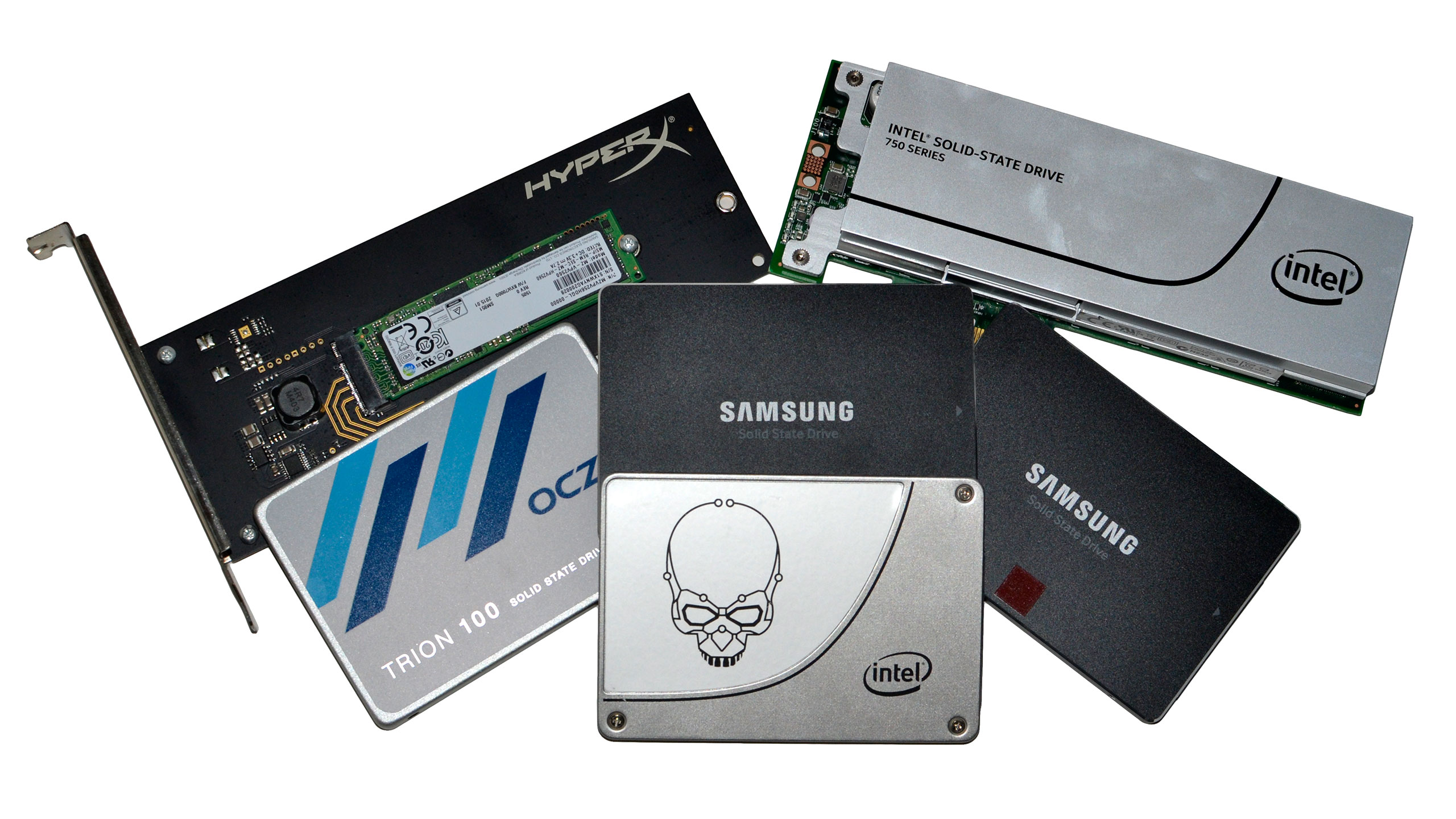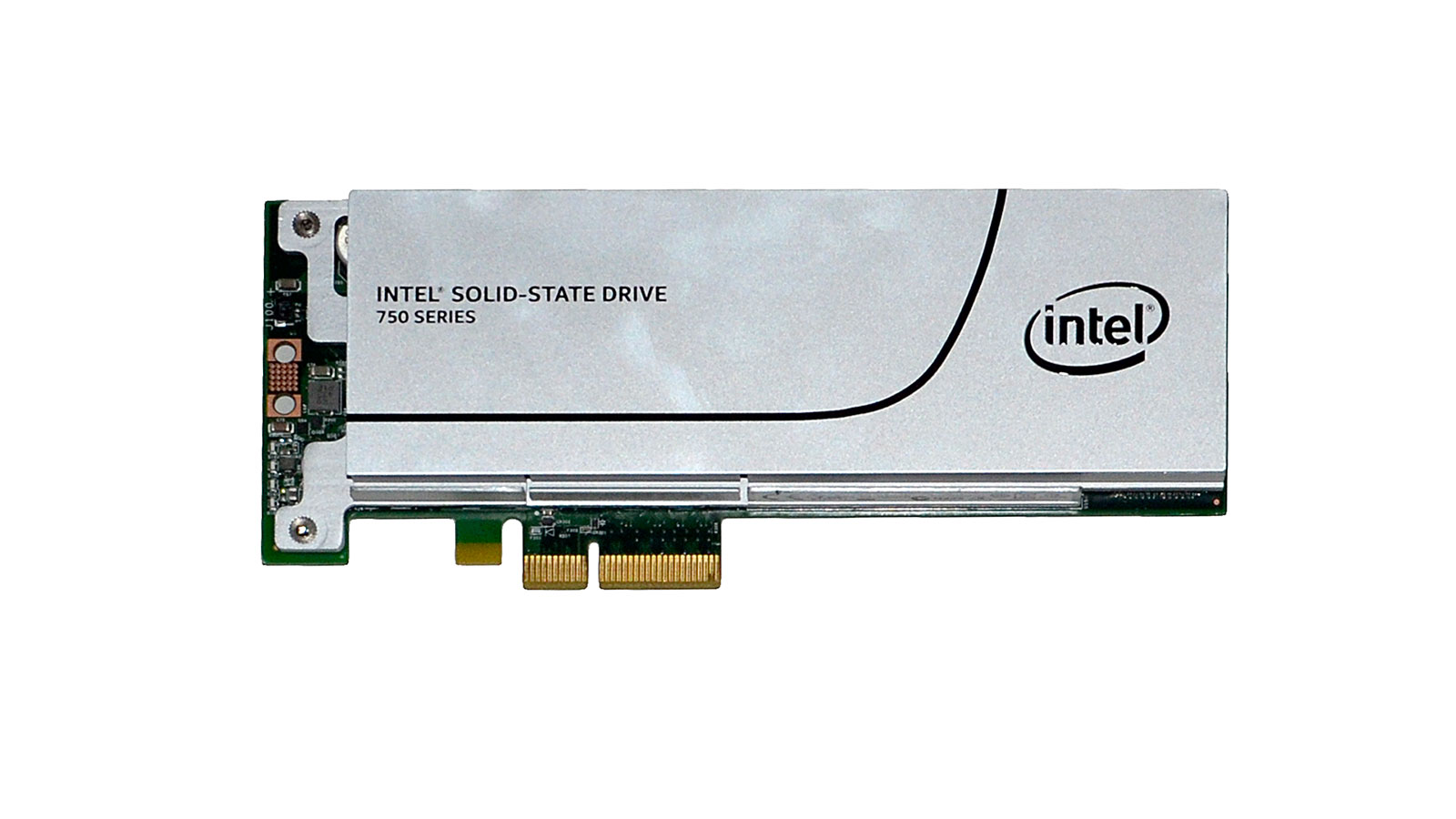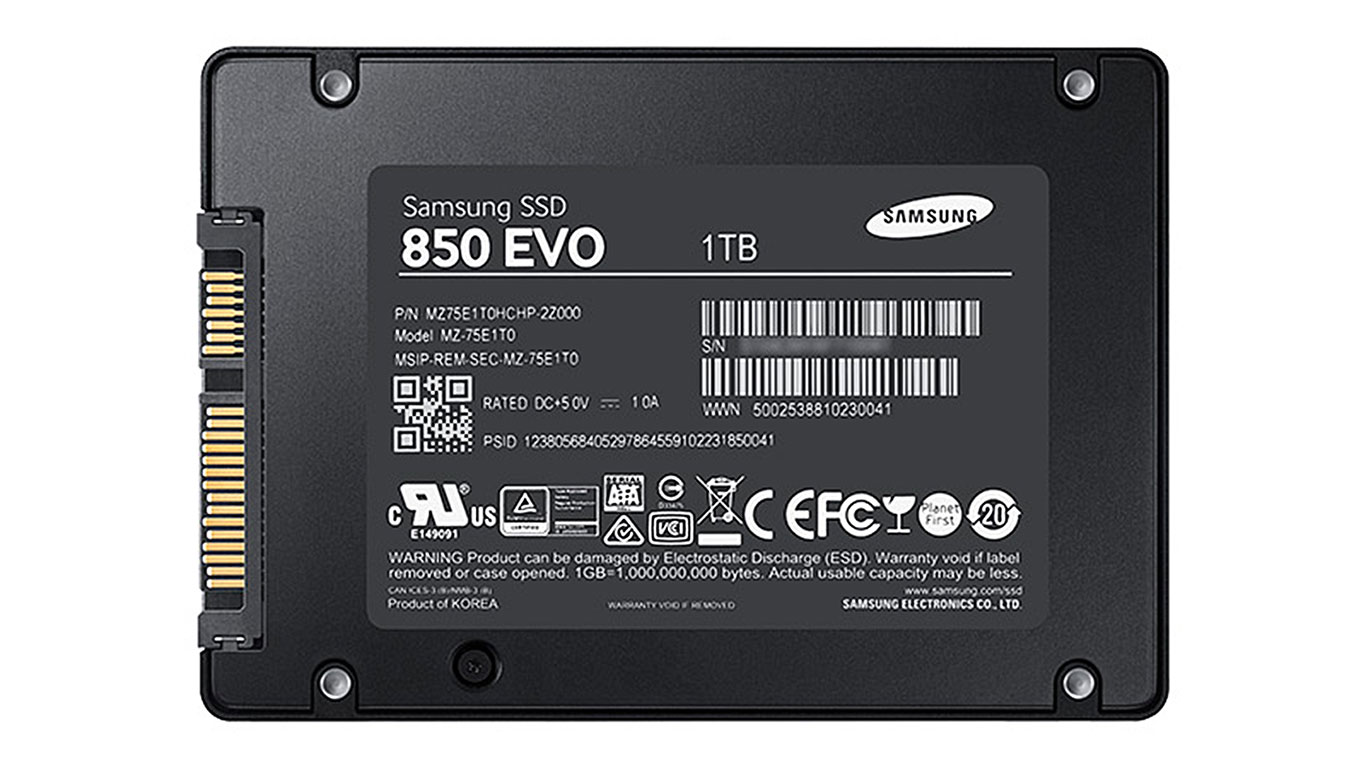SSD Performance: Resetting the Benchmarks

Just how fast is that SSD?
Every now and again, resetting the benchmark charts is necessary. Now is such a time, for several reasons. First, we have a new testbed (Skylake) that enables potentially higher performance, particularly for M.2 PCIe drives. Second, some of the benchmarks we were using have gotten a bit long in the tooth and needed an update. We want to have a good selection of both drives and benchmarks for use in future reviews, so we’ve wiped the slates clean and will have several SSD reviews over the coming weeks. First things first, let’s talk about our SSD test bed.
Initially, we had intended to use the same LGA2011-3 test bed that we use for graphics cards reviews, but then we ran into a problem. The Gigabyte X99-UDH4 motherboard has NVMe support and an M.2 slot, but the M.2 slot only gets x2 PCIe 2.0 lanes and bandwidth. That puts the brakes on faster M.2 drives, capping throughput at less than 1000MB/s. What’s the point in splurging on a high-end M.2 NVMe drive if you can’t even utilize its potential? With Skylake having recently launched, we had a second option: move to a Z170 motherboard. The ASUS Z170-A is more of a mainstream offering, but it does support an M.2 slot with x4 PCIe 3.0 connectivity, which is enough for current SSDs. With that in mind, here’s our new SSD test system:
| Maximum PC 2015 SSD Test Bed | |
|---|---|
| Platform | LGA1151 |
| CPU | Intel Core i7-6700K (4–4.2GHz) |
| Mobo | ASUS Z170-A |
| GPU | Intel HD Graphics 530 |
| SSDs | Intel SSD 750 1.2TB PCIe x4Samsung 850 Pro 1TB SATASamsung 850 EVO 250GB SATA 2x in RAID 0 |
| PSU | be quiet! Dark Power Pro 11 850W |
| Memory | G.Skill Ripjaws V 2x8GB DDR4-3000 |
| Cooler | be quiet! Dark Rock 3 |
| Case | be quiet! Silent Base 800 |

One of the key goals is to provide a selection of reference points. To that end, we’ve selected three of the top performing options. Setting the high water mark, the Intel SSD 750 1.2TB is one of the first NVMe enabled drives you can buy. There’s a drawback in that you have to use a PCIe slot (x4 PCIe 3.0 for maximum performance), but if you have the space, it will provide all the performance you need from your storage subsystem.

The reality, of course, is that most users are still on SATA, and many are running RAID 0 as a way of improving throughput and/or capacity while keeping costs down. The 2x250GB Samsung 850 EVO provides a great reference point as a “bang for the buck” solution, with a price currently sitting south of $200. That’s a far cry from the $439 you’ll pay for the 1TB Samsung 850 Pro, which is arguably the fastest SATA drive you can currently buy, though it’s also half the capacity. Note also that a single 500GB 850 EVO only costs $162, so you’re paying a bit extra for RAID 0—though two 500GB drives actually cost less than a single 1TB drive.

For those that want a single high-capacity SSD, our final baseline SSD reference point is the Samsung 850 Pro 1TB. Sporting Samsung’s V-NAND and with a high-performance controller, the 850 Pro remains the fastest SATA drive across a broad range of benchmarks. It also has a high endurance rating, roughly 6,000 Program/Erase cycles, which is far more than the TLC drives that are becoming increasingly common.
The rest of the system is more than enough to ensure there are no other bottlenecks for storage, though in some cases they’re obviously overkill. (Hello, Mr. 850W PSU!) The be quiet! case, CPU cooler, and power supply keep noise levels down, and we use the same system for other testing at times, so having the option of running a GPU or two is important.
Keep up to date with the most important stories and the best deals, as picked by the PC Gamer team.
Jarred's love of computers dates back to the dark ages when his dad brought home a DOS 2.3 PC and he left his C-64 behind. He eventually built his first custom PC in 1990 with a 286 12MHz, only to discover it was already woefully outdated when Wing Commander was released a few months later. He holds a BS in Computer Science from Brigham Young University and has been working as a tech journalist since 2004, writing for AnandTech, Maximum PC, and PC Gamer. From the first S3 Virge '3D decelerators' to today's GPUs, Jarred keeps up with all the latest graphics trends and is the one to ask about game performance.


